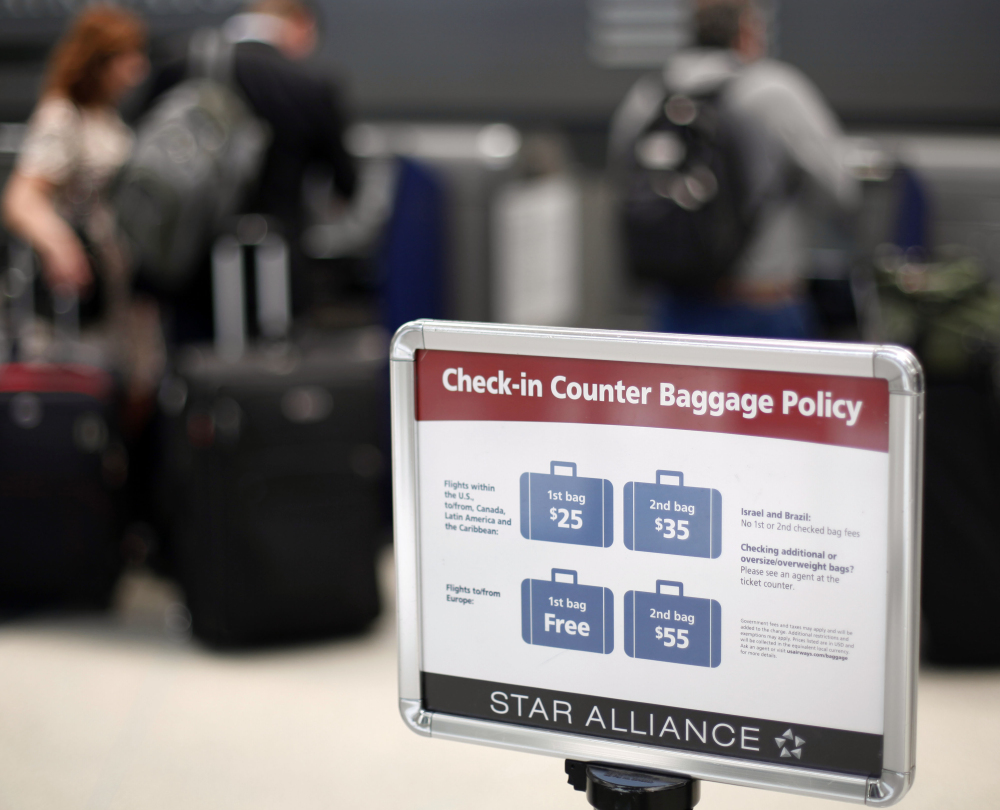WASHINGTON — Airlines should clearly disclose the cost of change and cancellation fees, as well as the size of the plane’s seats, before a passenger buys a ticket, a federal panel said Tuesday.
Hotels should also be required to include any mandatory fees in their room rates, the Transportation Department’s Advisory Committee for Aviation Consumer Protections recommended.
Some hotels have begun adding mandatory resort and other fees to bills even though customers say they weren’t informed of them when they booked their rooms. The panel’s recommendation on hotels was directed to the Federal Trade Commission, which has been investigating such so-called drip pricing.
Likewise, the four-member panel heard testimony that passengers must search to find the cost of change or cancellation fees that airlines hide in a ticket’s fine print. The fees can run into the hundreds of dollars, especially on international flights. The Transportation Department should require that the fees be spelled out clearly so passengers are informed before a ticket purchase, the panel said.
The panel also recommended that the Transportation Department permit airlines to choose whether to allow passengers to make wireless voice calls from planes during flights.
Airlines have shrunk the distance between a seat and the one in front by as much as 6 inches in recent years. Thirty-four inches used to be the norm for economy class seats, but now 31 inches is typical and some airlines have wedged in so many seats that there is as little as 28 inches of room.
The width of seats is typically 18 inches, but that has been reduced in some cases to 17 inches, and there are indications some airlines may shrink them even more, said Charlie Leocha, head of Travelers United, the consumer advocate on the panel.
Seat shrinkage has raised concern that passengers may get blood clots if they sit for a long time without the ability to move around, and that passengers may not be able to quickly evacuate a plane in an emergency.
In order for a plane to be certified, the Federal Aviation Administration requires aircraft makers to demonstrate that all passengers can be evacuated within 90 seconds with half the emergency exits blocked. There have been no evacuation tests of airliners with seats 28 inches apart, Leocha said.
The panel recommended that the FAA conduct more realistic evacuation tests, including of planes with seats as close as 28 inches apart.
Leocha said he was disappointed that the panel didn’t urge the FAA to issue regulations establishing a minimum amount of personal space per passenger. There are already regulations that set a minimum amount of space for pets on planes, he noted.
Panel member Dave Berg, an attorney with Airlines for America, a trade group for major airlines, said he objected to the notion that the government should establish a minimum amount of space per passenger. Difference between seat sizes “goes to the heart and soul” of airline competition, and it would be inappropriate for the government to interfere in such competition by a deregulated industry, he said.
The FAA is not required to act on the recommendations. The airline passengers advocacy group FlyersRights has filed a petition asking the FAA to establish a minimum amount of personal space per passenger.
Copy the Story LinkSend questions/comments to the editors.



Success. Please wait for the page to reload. If the page does not reload within 5 seconds, please refresh the page.
Enter your email and password to access comments.
Hi, to comment on stories you must . This profile is in addition to your subscription and website login.
Already have a commenting profile? .
Invalid username/password.
Please check your email to confirm and complete your registration.
Only subscribers are eligible to post comments. Please subscribe or login first for digital access. Here’s why.
Use the form below to reset your password. When you've submitted your account email, we will send an email with a reset code.